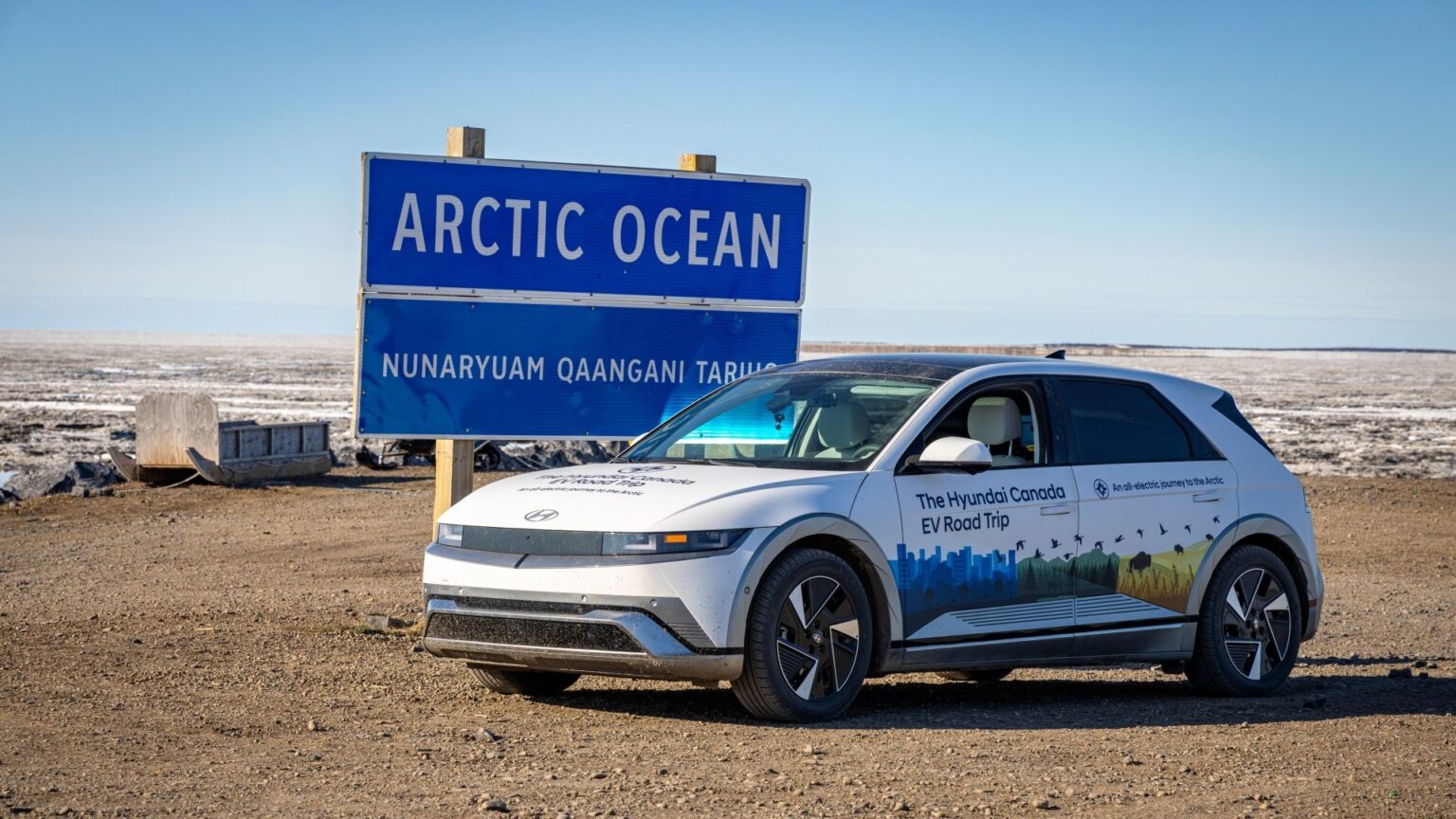Critics of electric vehicles often rail against the high initial costs, limited range, expensive repairs, and not-insignificant fire risks posed by today’s EVs. While radical, these folks aren’t wrong bringing up these points, though their fearmongering is blown way out of proportion. Proving that electric vehicles are not as fragile or unworkable as many critics may think, one Hyundai owner just took his 2025 Ioniq 5 on an epic road trip.
To The Arctic Ocean And Back Again
Patrick Nadeau drove his electric hatchback all the way to the Arctic Circle, to Tuktoyaktuk in Canada’s Northwest Territories. This town is on the coast of the Beaufort Sea, just about as far north as you can go in Canada before crashing into the water. This monumental journey took Nadeau across vast swaths of the country, through five provinces and two territories.
Nadeau started this epic journey on April 24, leaving Hyundai’s Canadian headquarters in Markham, Ontario, which is near Toronto. He arrived in Tuktoyaktuk on June 10, about a month and a half later. Along the way, he proved that EVs are a viable transportation solution, even in extreme conditions, though this journey would have almost certainly been much more challenging – and riskier – in the dead of winter.
The road conditions on this trip were unpredictable, and the charging infrastructure was limited, but the Ioniq 5 still made it, and successfully returned to Markham afterwards. Of course, a trip like this requires plenty of planning, and that’s exactly what Nadeau did.
“Traveling this far with any vehicle is adventure! The most challenging portions of this trip for me were two stretches of nearly 400 km (249 miles) with nothing in sight, not even a 110-volt outlet,”
– Patrick Nadeau, the Ioniq 5 owner
That is, frankly, more than a little terrifying. The Ioniq 5 used for this cross-country drive had an advertised range of 463 km (288 miles), meaning there wasn’t always a lot of wiggle room for incidents or miscalculations.
Making this feat even more impressive, the vehicle was laden with some 400 pounds of equipment, camping supplies, camera gear, food, and even a full-size spare tire, a wise addition Nadeau grabbed in Whitehorse, Yukon. Tire stores are probably few and far between in Northern Canada, just like movie theaters, department stores, or Chinese buffets. Fortunately, Nadeau didn’t face any punctures or blowouts on this trip, though if he didn’t have the spare, he probably would have gotten stuck behind a tractor trailer hauling drywall screws, one with holes in the floor. Preparedness is always a good thing.
Unexpected Challenges
Now, you’d probably think a lack of EV chargers in the northern wilderness was the biggest hindrance during this trip, but that’s not necessarily the case. “I ended up being stuck in Dawson City for a few days,” Nadeau explained, “because I needed to hop on a ferry that was not open yet due to high water levels.” Beyond that, he also said, “After reaching the Arctic Ocean, a part of the Alaska Highway was closed for a little while due to wildfires, which also delayed my trip.”
Overall, Nadeau drove his Ioniq 5 nearly 20,000 km (12,427 miles) on this epic journey. The vehicle required a whopping 87 charging stops, and the average charging time was 42 minutes. Overall, he spent around $1,400 on electricity, though, as he pointed out, in a similar vehicle that has an average gasoline consumption rate of 10 liters per 100 km, it would have cost twice as much to do this journey.
Electric vehicles aren’t a perfect transportation solution, but they do work well for a lot of drivers, even in extreme cases like this.
Read the full article here


